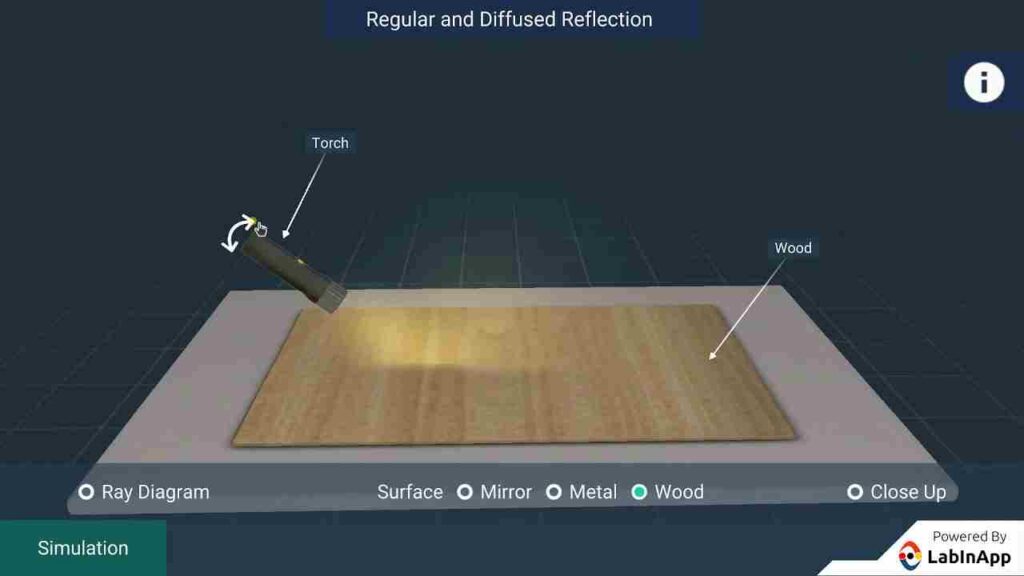
Explore 15 Key Difference between Regular and Irregular Reflection
Reflection occurs when light waves bounce off a surface, and it can be categorized as regular or irregular. Regular reflection happens on smooth surfaces like mirrors, where light waves reflect uniformly. Irregular reflection occurs on rough surfaces, causing scattered reflections. In this article, we will explore the 15 key difference between Regular and Irregular Reflection these two types of reflection.
Difference between Regular and Irregular Reflection
Surface Smoothness: Regular reflection occurs on smooth surfaces, while irregular reflection occurs on rough surfaces.
Reflection Angle: Regular reflection follows the law of reflection, where the angle of incidence equals the angle of reflection. Irregular reflection results in scattered reflections with various angles.
Image Formation: Regular reflection produces clear and well-defined images. Irregular reflection creates blurred or diffused images.
Reflective Surface: Regular reflection occurs on highly reflective surfaces like mirrors, while irregular reflection can happen on matte finishes, paper, and textiles.
Specular Highlights: Regular reflection includes specular highlights, which are bright spots on the reflective surface. Irregular reflection lacks such highlights.
Intensity of Reflection: Regular reflection maintains the intensity of incident light, resulting in a bright reflection. Irregular reflection reduces the intensity of reflected light, leading to a less intense reflection.
Mirror-like Reflection: Regular reflection is mirror-like, with a highly reflective surface and clear image reproduction. Irregular reflection is distorted or blurred.
Predictability: Regular reflection follows predictable laws, making it easier to calculate angles and trace light paths. Irregular reflection is less predictable and more challenging to analyze.
Light Direction: Regular reflection maintains the direction of incident light waves. Irregular reflection scatters light waves in multiple directions.
Surface Interaction: Regular reflection involves minimal interaction between light waves and the reflective surface. Irregular reflection includes significant interactions as light waves scatter off surface irregularities.
Homogeneity of Reflection: Regular reflection exhibits a homogeneous reflection pattern, while irregular reflection introduces heterogeneity with varying intensity and direction of reflection.
Surface Impact: Regular reflection is less affected by surface imperfections. Irregular reflection is greatly influenced by surface roughness and small irregularities.
Surface Preparation: Regular reflection requires careful surface preparation to ensure smoothness. Irregular reflection occurs naturally on rough surfaces.
Application Domains: Regular reflection finds applications in optics, mirrors, telescopes, and laser systems. Irregular reflection is relevant in photography, matte finishes, and scattering phenomena.
Aesthetics and Perception: Regular reflection is associated with elegance, symmetry, and clarity. Irregular reflection is appreciated for its uniqueness, artistic effects, and adding texture and depth.
Understanding the difference between regular and irregular reflection gives us insight into the behavior of light and the captivating world of reflections. Regular reflection follows predictable laws and provides clear images, while irregular reflection showcases the beauty of scattering and rough surfaces. By appreciating these distinctions, we can enhance our understanding of light and its interactions in our surroundings.
Also Read: Explore 15 Key Difference between Electrophile and Nucleophile